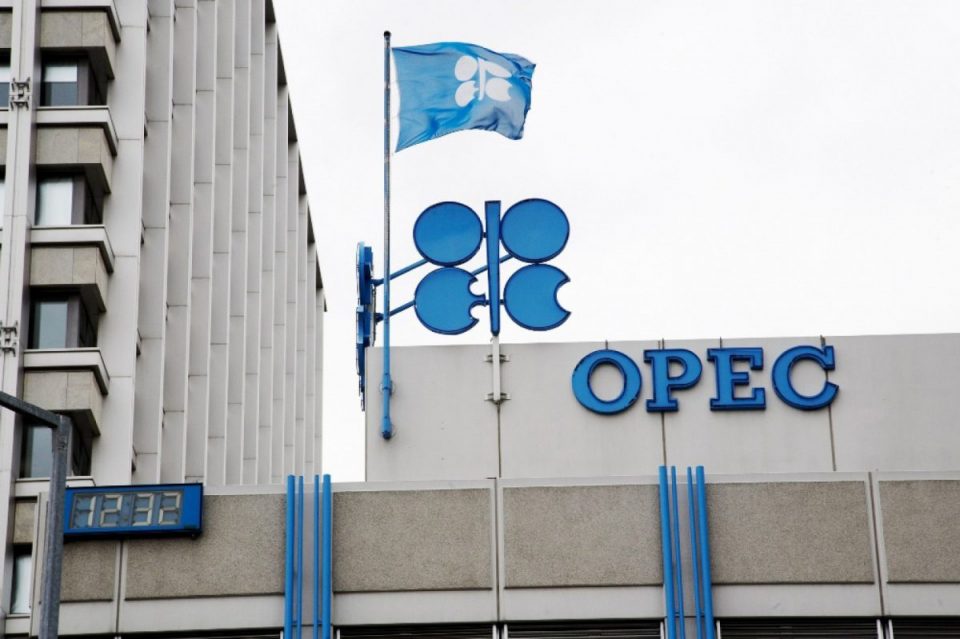From end of this week, the Organisation of Petroleum Exporting Countries (OPEC) and non-OPEC under the OPEC+ alliance will implement oil production cut of 9.7 million per day to stem crashing oil price. Will the output cut deal heal the global oil market malady? EMEKA UGWUANYI reports.
Members of the Organisation of Petroleum Exporting Countries (OPEC) and non-OPEC under the OPEC+ alliance early this month agreed to cut production by 9.7 million barrels daily between next month and June, the biggest cut ever by the world’s oil producers. The deal was struck to stabilise the global oil market that has been badly hit by the coronavirus (COVID-19) pandemic.
The OPEC+ agreement is that the initial 9.7million barrels per day cut would last through May and June. Afterwards, the production cut would be reduced to eight million barrels per day for the rest of the year.
Beginning next January, the cuts would decrease to six million barrels per day, which would continue through April 2022, the group said.
According to industry analysts, the production cut is unlikely to solve the oil market problem. Immediately after the OPEC+ group announced the historic production reduction, prices rose marginally. After a day, the prices began to fall continuously again because the initial price rise was caused by market fundamentals but by sentiments.
To the analysts, the agreed reduction in output amounts to only about 10 per cent of the world’s normal supply of oil, far below the estimates for how much demand for oil has collapsed amid the coronavirus pandemic.
They noted that the demand crisis caused by the pandemic was huge and could only be gradually reversed by restarting global economic activities and reopening global borders for businesses.
Oil prices fell to 18-year lows in recent weeks. The drop came after Saudi Arabia and Russia abandoned years of production cuts in early March, launching a price war by flooding the market with crude.
The coronavirus, meanwhile, dealt a devastating blow to energy demand, pushing prices even lower. Besides, the OPEC+ production cut doesn’t after oil producers outside the group such as United States.
Also global oil storage is rapidly filling up, exceeding 70 per cent and approaching operating max,” Steve Puckett, executive chairman of TRI-ZEN International, an energy consultancy, told CNBC.
The agreement was not contingent on nations outside of OPEC+ curbing production, which some analysts had suggested might be a stipulation for Saudi Arabia and Russia to scale back production. The group did, however, call on other major producers to cut production in a further bid to prop up prices.
Analysts at Goldman Sachs called the deal “historic yet insufficient,” adding that the voluntary cuts were “still too little and too late to avoid breaching storage capacity.
Ultimately, this simply reflects that no voluntary cuts could be large enough” to offset the loss in demand, which they pegged at 19 million barrels per day on average this month and May.
Senior market analyst for Asia Pacific at Oanda,Jeffrey Halley, called the agreement “underwhelming,’ noting that non-OPEC+ oil producers, including the United States, Canada and Norway, have not committed on paper to “actual cuts to production.”
“The OPEC+ deal, although well-meaning in intent, wholeheartedly fails to address the supply/demand basis confronting the world. It can at best only put a floor under oil prices at their March lows,” Halley added.
All the crude grades except Brent trade below $20 per barrel. According to Bloomberg, Brent for June settlement fell to as low as $15.98 a barrel, the lowest since June 1999, before closing $1.04 higher at $20.37 per barrel.
The Dated Brent benchmark, a global reference for almost two-thirds of the world’s physical flows, had plunged to $13.24 a barrel last week, the lowest since 1999, according to price reporting service S&P Global Platts.
“With the price so low, key European and African crude streams including Urals and Bonny Light will sell under $10, as they trade at a discount to the marker,” it added.
Currently, oil firms across the world have begun to cut expenditures. While some firms have started to cut their workforce, others have warned about job losses and yet others have begun filing for bankruptcy. Rig count is also substantially reducing with a good number stacked. Culled from The Naton




